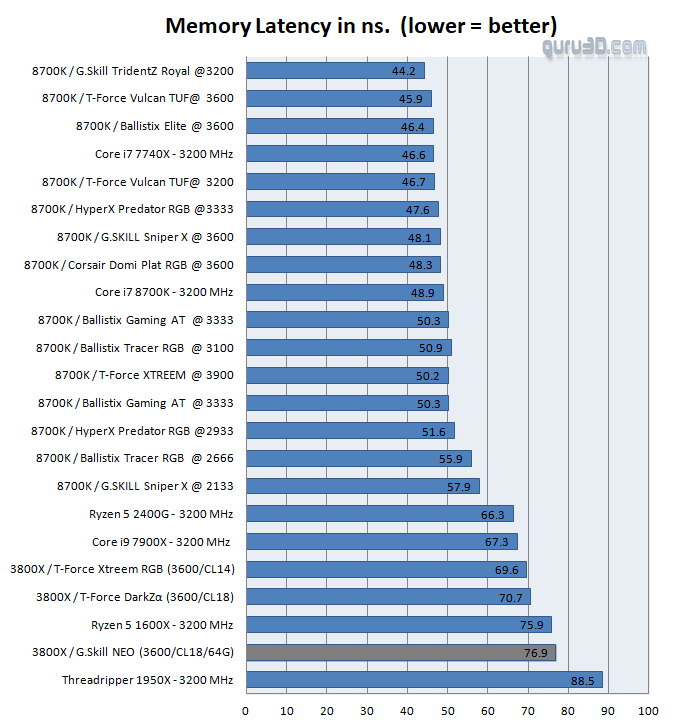System Memory Bandwidth Performance
System Memory Bandwidth Performance
So here is a mixture of dual and quad-channel results varying with processors and platforms. We tested the memory as highlighted in the charts. Now, with regular memory at 2666 MHz, you will see performance hovering at the 40K marker, there is nothing wrong with that at all. It's just that you can get so much more bandwidth at a higher frequency, but at the cost slower timings.
Please read: You will have noticed that the Ryzen 3000 processors with up to 8 cores make use of one CPU die. Here the write performance is halved. This is normal behavior. Client workloads do very little pure writing, so the CCD/IOD link is 32B/cycle while reading and 16B/cycle for writing. This allows AMD to save power and area inside the package to spend on other, more beneficial areas. Our tests back this up, we see little to no perf effect application-wise.




